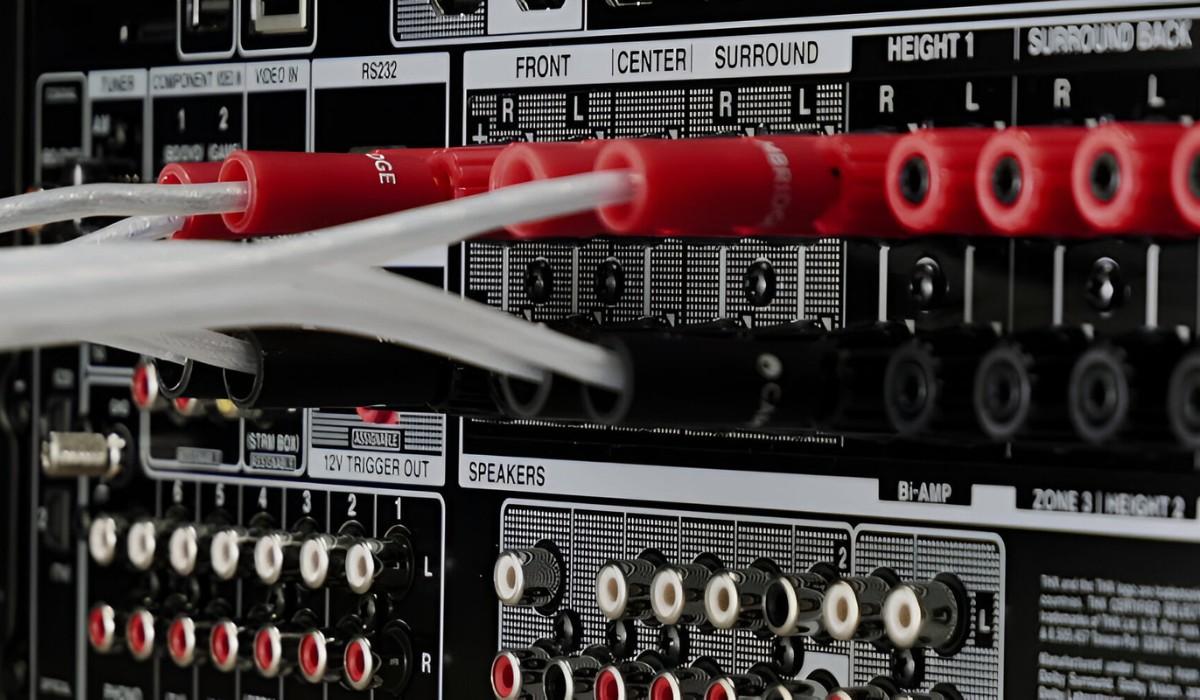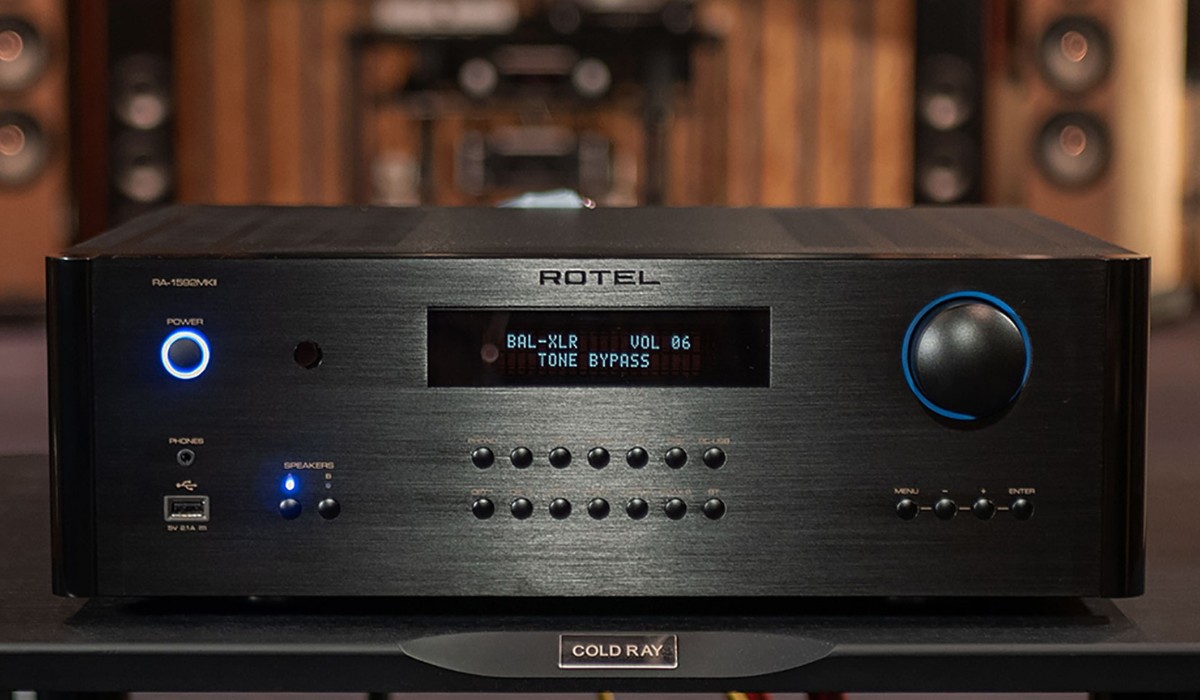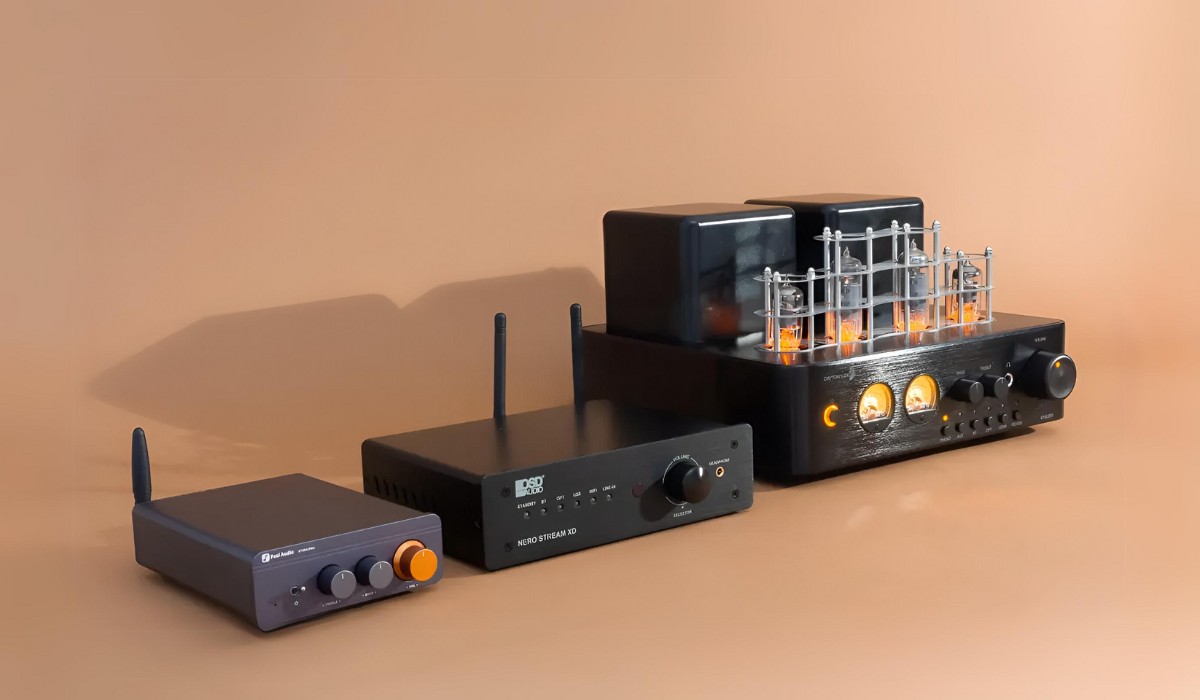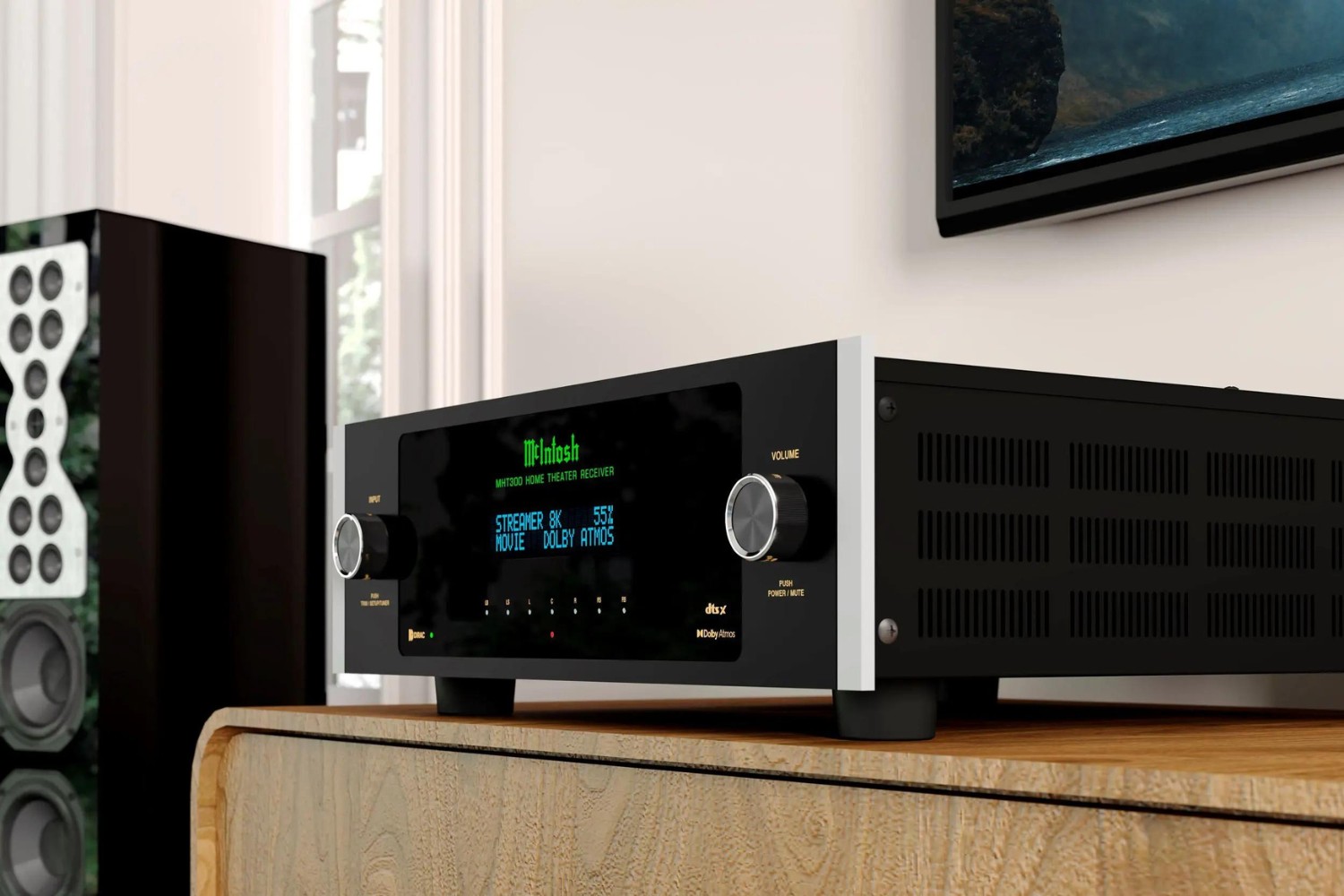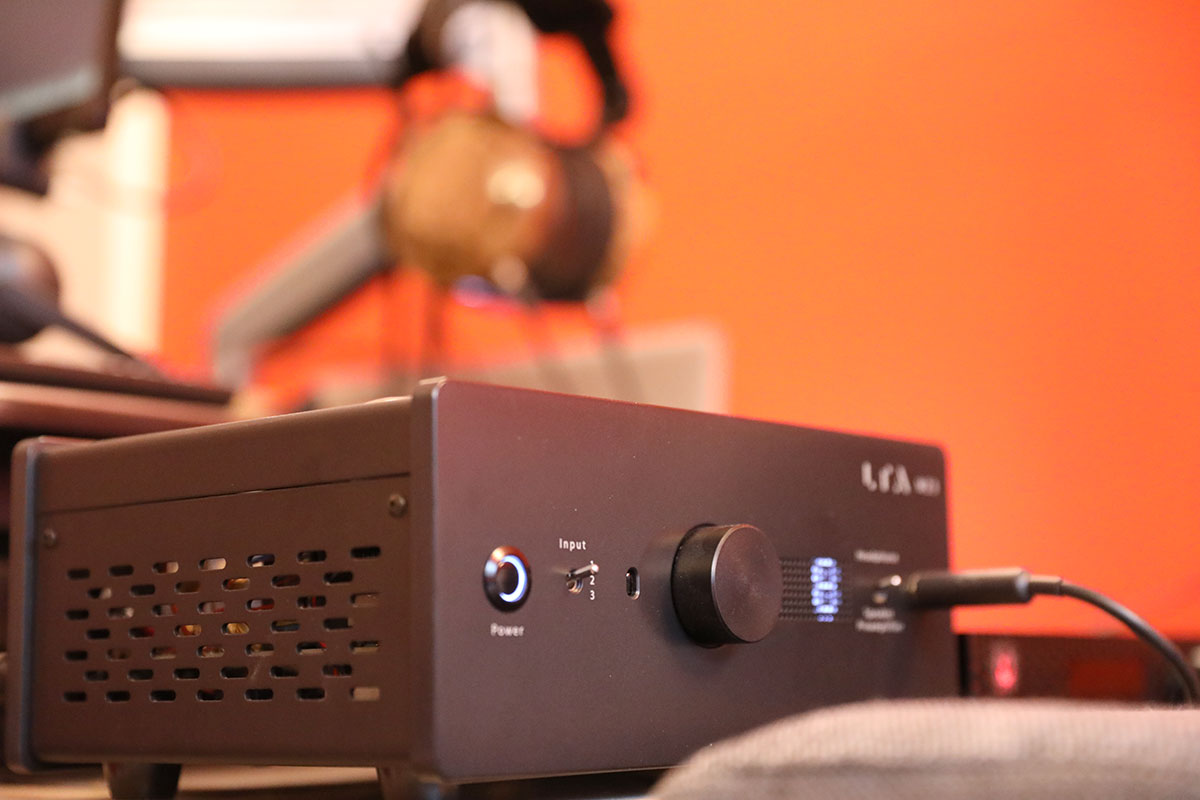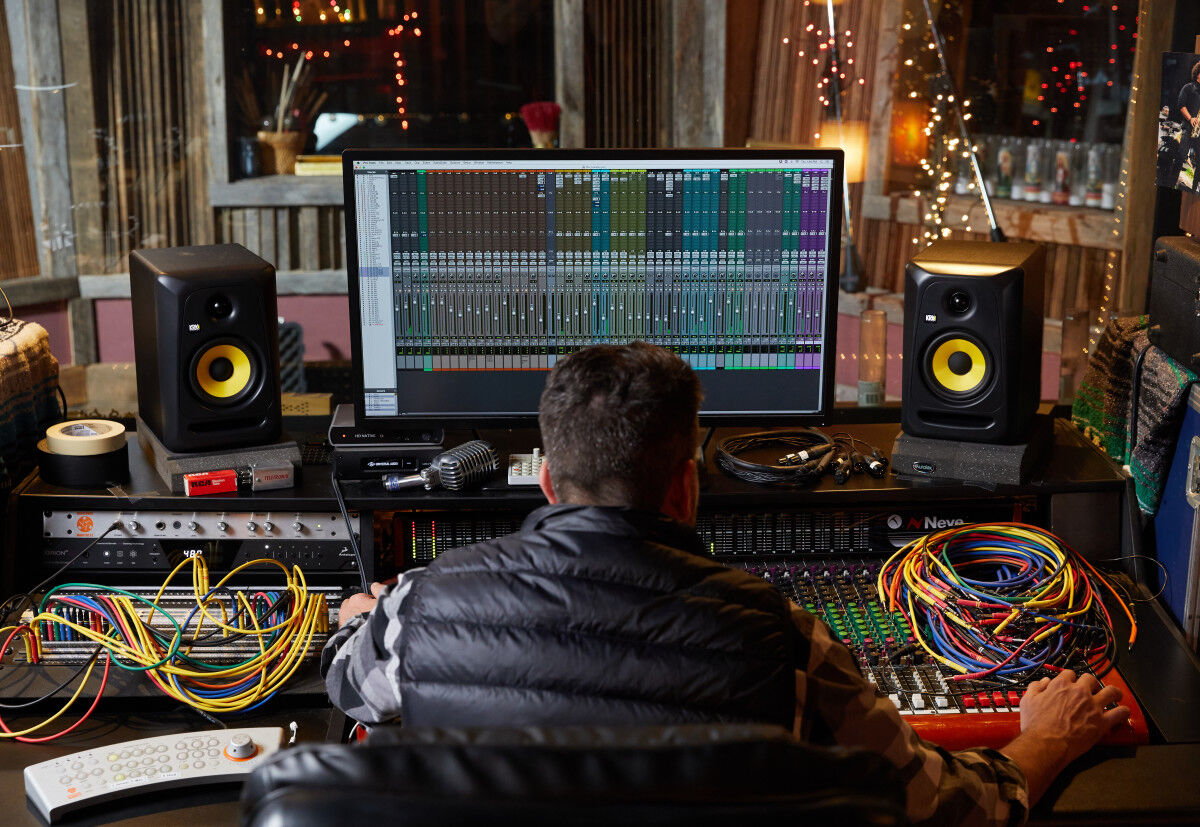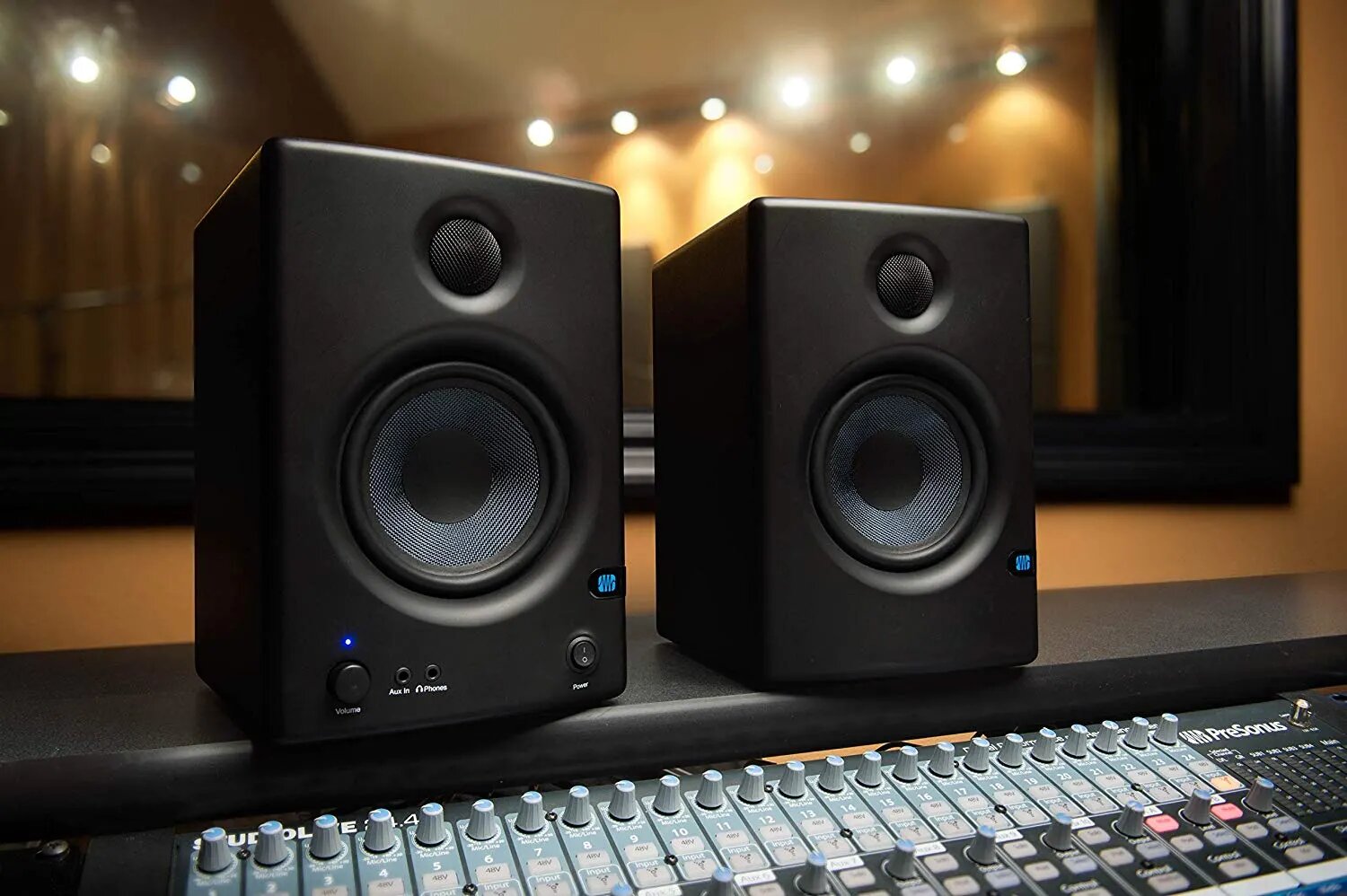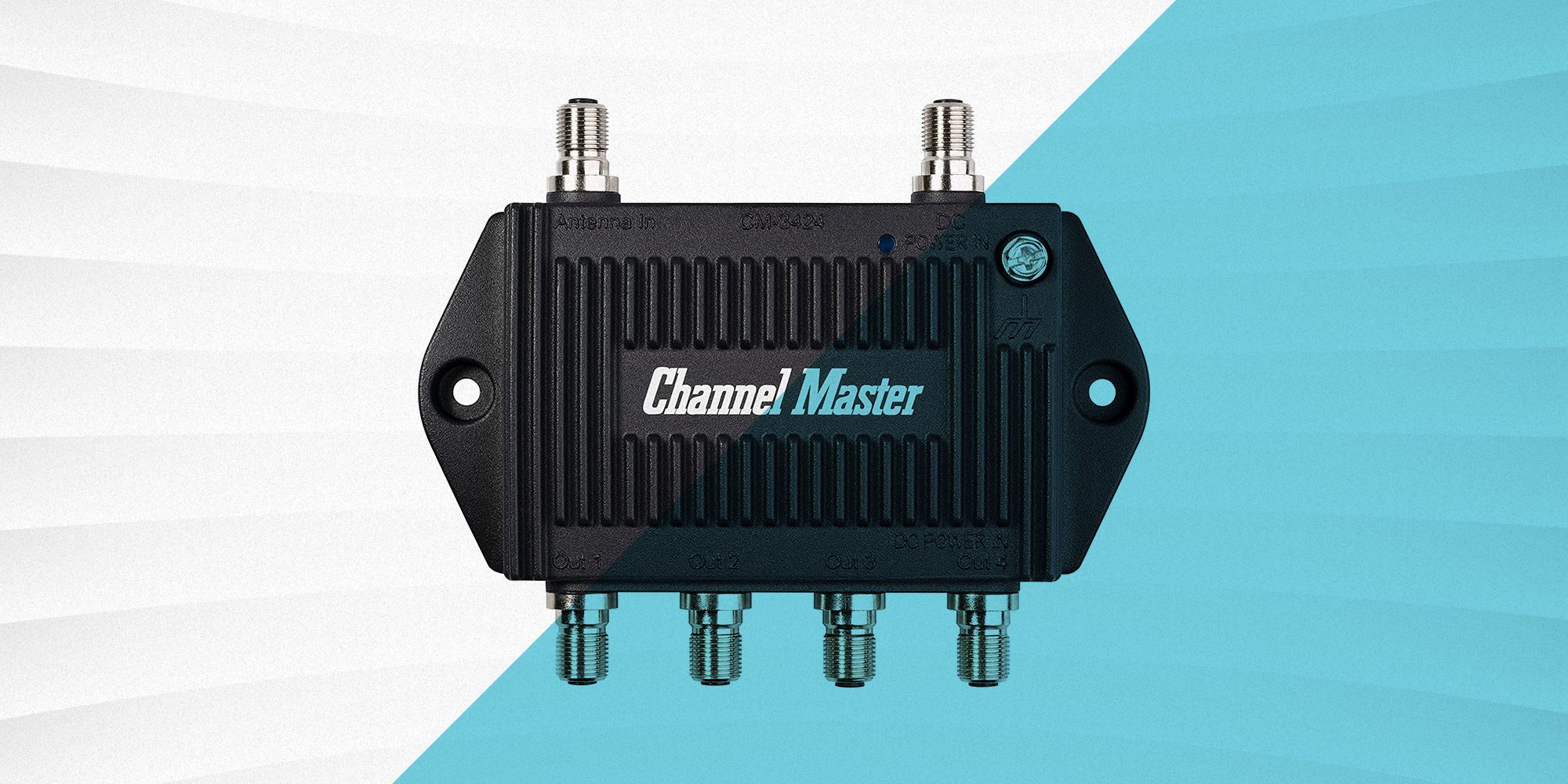Introduction
Welcome to the world of high-fidelity audio! If you're an avid audiophile or a home theater enthusiast, you're likely always on the lookout for ways to enhance your audio experience. Bi-amping, a technique that involves using two separate channels of amplification for a single speaker, is a popular method for achieving improved sound quality and greater control over your audio system. In this guide, we'll explore the concept of bi-amping and how you can utilize your AV receiver to harness its benefits.
Whether you're a seasoned audio aficionado or a newcomer to the world of high-fidelity sound, understanding the principles behind bi-amping and its application with an AV receiver can significantly elevate your audio setup. By the end of this guide, you'll have a comprehensive understanding of how to bi-amp using an AV receiver, enabling you to unlock the full potential of your speakers and elevate your listening experience to new heights.
Bi-amping is a technique that involves using separate amplifiers for the low-frequency and high-frequency drivers within a single speaker. By doing so, you can effectively divide the audio signal into specific frequency ranges and power each driver with its dedicated amplifier channel. This approach allows for greater control over the speaker's performance, resulting in improved clarity, detail, and overall sound quality.
Now, let's delve into the world of bi-amping and uncover the benefits it offers, the considerations for choosing the right AV receiver, the setup process, and the essential steps for optimizing your bi-amped system. Whether you're aiming to elevate your music listening experience or create a captivating home theater setup, bi-amping with an AV receiver can be a game-changer in your audio journey. So, let's embark on this exploration of bi-amping and unveil the secrets to maximizing your audio system's potential.
What is Bi-Amping?
Bi-amping, short for “bi-amplification,” is a technique used to enhance the audio performance of speakers by employing separate amplifiers for different frequency ranges. This approach involves dividing the audio signal into distinct frequency bands and powering each band with its dedicated amplifier channel. By doing so, bi-amping allows for greater control over the speaker’s drivers, particularly the low-frequency (woofer) and high-frequency (tweeter) components.
Traditionally, a single amplifier is used to power the entire speaker, with the audio signal being split by a passive crossover network within the speaker itself. However, in a bi-amped setup, the passive crossover is bypassed, and the low and high-frequency drivers are driven by independent amplifier channels. This separation of amplification enables more precise control over the speaker’s performance, resulting in several key benefits.
One of the primary advantages of bi-amping is the ability to provide ample power to each driver, ensuring that they operate optimally without being constrained by the limitations of a single amplifier channel. By delivering dedicated power to the low and high-frequency components, bi-amping minimizes intermodulation distortion and crosstalk, leading to improved clarity and detail in the audio reproduction.
Moreover, bi-amping offers greater flexibility in tailoring the sound characteristics of the speaker. With independent amplification for the low and high-frequency drivers, audio enthusiasts can fine-tune the balance, dynamics, and tonal qualities of the speaker to suit their preferences and the acoustics of their listening environment. This level of customization is particularly valuable for audiophiles and home theater enthusiasts striving for an immersive and precisely tailored audio experience.
It’s important to note that bi-amping differs from bi-wiring, which involves using separate cables to connect the low and high-frequency inputs of a speaker to a single amplifier. While bi-wiring can offer some benefits by reducing interference between the driver circuits, it does not provide the same level of control and performance optimization as bi-amping.
Overall, bi-amping represents a sophisticated approach to speaker optimization, allowing for enhanced power delivery, improved fidelity, and customizable sound shaping. In the following sections, we’ll explore the specific benefits of bi-amping, the considerations for selecting the right AV receiver, and the step-by-step process of setting up and fine-tuning a bi-amped system using an AV receiver.
Benefits of Bi-Amping
Bi-amping offers a multitude of advantages that can significantly enhance the audio performance of speakers, providing a compelling rationale for audio enthusiasts to explore this advanced amplification technique. By leveraging the benefits of bi-amping, enthusiasts can elevate their listening experience and achieve greater control over their audio systems.
- Enhanced Power Delivery: One of the primary benefits of bi-amping is the ability to deliver ample power to each driver within the speaker. By employing separate amplifiers for the low and high-frequency components, bi-amping ensures that each driver receives dedicated power, minimizing the risk of power constraints and distortion, particularly during dynamic audio passages.
- Improved Clarity and Detail: Bi-amping minimizes intermodulation distortion and crosstalk, leading to improved clarity, detail, and separation of audio frequencies. This results in a more articulate and transparent sound reproduction, allowing listeners to discern subtle nuances and intricacies within the music or audio content.
- Customizable Sound Shaping: With independent amplification for the low and high-frequency drivers, bi-amping enables users to fine-tune the tonal characteristics, balance, and dynamics of the speaker. This level of customization empowers audio enthusiasts to tailor the sound to their preferences and the acoustics of their listening environment, creating a more personalized and immersive listening experience.
- Reduced Interference and Distortion: By bypassing the passive crossover network within the speaker and employing separate amplifiers, bi-amping reduces the potential for interference and distortion that can arise from shared amplifier channels. This results in cleaner, more accurate audio reproduction, particularly at higher volume levels and during complex musical passages.
- Optimized Speaker Control: Bi-amping provides greater control over the individual drivers within the speaker, allowing for precise management of each driver’s performance characteristics. This level of control can lead to improved transient response, reduced phase issues, and enhanced overall coherence in sound reproduction.
These benefits collectively contribute to a more refined and engaging audio experience, making bi-amping an attractive option for those seeking to extract the full potential of their speakers and achieve a heightened level of audio fidelity. As we delve into the practical aspects of implementing bi-amping using an AV receiver, these advantages will underscore the value of this advanced amplification technique in elevating the performance of your audio system.
Choosing the Right AV Receiver for Bi-Amping
When embarking on the journey of bi-amping your speakers using an AV receiver, selecting the appropriate receiver is crucial to ensuring optimal compatibility and performance. Not all AV receivers are equipped to support bi-amping, so it’s essential to consider specific features and capabilities that align with the requirements of a bi-amped setup.
First and foremost, look for an AV receiver that offers bi-amping support as a built-in feature. This may be indicated in the receiver’s specifications or user manual, highlighting its compatibility with bi-amping configurations. Additionally, ensure that the receiver provides sufficient amplification channels to accommodate the bi-amping setup. For instance, a 7.1 channel receiver can be utilized for bi-amping a pair of speakers, with each speaker utilizing two amplifier channels – one for the low-frequency driver and another for the high-frequency driver.
Furthermore, consider the power output and quality of the amplifier channels within the AV receiver. Since bi-amping involves delivering dedicated power to each driver, it’s important to have robust and high-quality amplification for optimal performance. Look for receivers with ample power reserves and low distortion ratings, as these factors can directly impact the fidelity and dynamics of the bi-amped audio output.
Another critical aspect to consider is the receiver’s flexibility in configuring the amplifier channels for bi-amping. Some AV receivers offer dedicated pre-outs for the front left and right speakers, allowing for seamless integration with a bi-amped setup. Additionally, look for receivers that provide comprehensive control over the crossover settings, allowing users to fine-tune the frequency distribution between the low and high-frequency drivers to align with their speaker’s specifications and acoustic characteristics.
It’s also beneficial to explore receivers with advanced room calibration and equalization features, such as Audyssey or proprietary calibration systems. These technologies can optimize the audio performance of the bi-amped system by compensating for room acoustics and speaker characteristics, resulting in a more refined and balanced sound reproduction.
Lastly, consider the overall connectivity options and compatibility with your existing audio and video components. Ensure that the AV receiver offers the necessary inputs and outputs to accommodate your speakers, source devices, and display equipment, fostering a seamless integration within your audio-visual setup.
By carefully evaluating these factors and selecting an AV receiver that aligns with the requirements of bi-amping, you can lay a solid foundation for building a high-performance bi-amped audio system. In the subsequent sections, we’ll delve into the setup process and essential steps for harnessing the potential of your chosen AV receiver in a bi-amped configuration.
Setting Up Your AV Receiver for Bi-Amping
Once you’ve chosen a suitable AV receiver equipped to support bi-amping, the next step involves configuring the receiver for this advanced amplification technique. The setup process entails several key considerations to ensure that the receiver is optimized to deliver dedicated power to the low and high-frequency drivers of your speakers.
Begin by identifying the front left and right speaker terminals on your AV receiver. These terminals are typically labeled as “Front L” and “Front R” and are associated with the main stereo output channels. In a bi-amping configuration, each of these speaker terminals will be connected to two separate amplifier channels – one for the low-frequency driver and another for the high-frequency driver of each speaker.
Next, ensure that your AV receiver provides the option to assign the amplifier channels for bi-amping. This may involve accessing the receiver’s setup menu or on-screen interface to designate the front left and right speakers for bi-amping. Some receivers offer a specific bi-amping mode or configuration setting that enables the redirection of amplifier channels to the corresponding speaker drivers.
Once the bi-amping mode or configuration is activated, proceed to connect the front left and right speaker terminals to the corresponding low and high-frequency inputs on your speakers. This typically involves using separate speaker cables for each driver, ensuring that the low-frequency outputs from the receiver are connected to the woofer inputs on the speakers, while the high-frequency outputs are connected to the tweeter inputs.
After making the physical connections, it’s essential to verify the polarity and phase alignment of the speaker connections. Ensure that the positive and negative terminals of each amplifier channel align with the corresponding terminals on the speaker inputs, maintaining proper phase coherence for both the low and high-frequency drivers.
Additionally, consider the impedance and power handling capabilities of your speakers when bi-amping. Ensure that the amplifier channels within the AV receiver are capable of delivering the appropriate power levels and impedance matching for the bi-amped configuration, aligning with the specifications of your speakers to avoid potential impedance mismatch or power inadequacies.
By meticulously setting up your AV receiver for bi-amping, you can establish the foundation for harnessing the benefits of this advanced amplification technique. In the subsequent sections, we’ll explore the critical steps for connecting your speakers for bi-amping and fine-tuning your AV receiver settings to achieve optimal performance in a bi-amped audio system.
Connecting Your Speakers for Bi-Amping
When bi-amping your speakers using an AV receiver, the process of connecting the speakers is a pivotal step in establishing the bi-amped configuration. By ensuring proper connections and wiring, you can effectively channel dedicated amplifier channels to the low and high-frequency drivers of your speakers, optimizing their performance and sonic capabilities.
Begin by identifying the low and high-frequency inputs on your speakers. These inputs are typically labeled as “woofer” or “low” for the low-frequency driver and “tweeter” or “high” for the high-frequency driver. It’s essential to ensure that your speakers are designed for bi-amping and feature separate inputs for the low and high-frequency components.
Once you’ve located the low and high-frequency inputs, use separate sets of speaker cables to connect the corresponding amplifier channels from your AV receiver to each driver. For example, the low-frequency outputs from the bi-amping designated amplifier channels on the receiver should be connected to the woofer inputs on the speakers, while the high-frequency outputs should be connected to the tweeter inputs.
When making the connections, pay close attention to the polarity and phase alignment of the speaker cables. Ensure that the positive and negative terminals of each amplifier channel align with the corresponding terminals on the speaker inputs, maintaining proper phase coherence for both the low and high-frequency drivers. Consistent phase alignment is crucial for preserving the integrity of the audio signal and ensuring coherent sound reproduction.
It’s also important to use high-quality speaker cables that are suitable for bi-amping applications. Select cables with adequate gauge and conductivity to minimize signal loss and impedance issues, particularly when delivering power to the low and high-frequency drivers separately. Additionally, consider the length of the speaker cables and route them in a manner that minimizes interference and maintains signal integrity.
After making the physical connections, carefully secure the speaker cables to the terminals on both the AV receiver and the speakers, ensuring a snug and reliable connection without any loose or exposed wiring. Once the connections are in place, conduct a thorough visual inspection to confirm that all connections are properly established and that the cables are routed in a tidy and organized manner.
By meticulously connecting your speakers for bi-amping, you can effectively harness the benefits of this advanced amplification technique, providing dedicated power and control to the low and high-frequency drivers of your speakers. In the subsequent sections, we’ll delve into the essential steps for adjusting your AV receiver settings and fine-tuning your bi-amped system to achieve optimal audio performance.
Adjusting Your AV Receiver Settings for Bi-Amping
After physically connecting your speakers for bi-amping, the next crucial step involves adjusting the settings on your AV receiver to optimize its performance in a bi-amped configuration. By fine-tuning the receiver settings, you can ensure that the dedicated amplifier channels are effectively channeled to the low and high-frequency drivers of your speakers, maximizing their sonic potential.
Begin by accessing the setup menu or on-screen interface of your AV receiver. Navigate to the speaker configuration or channel assignment settings, where you can designate the front left and right speakers for bi-amping. Depending on the receiver model, this may involve selecting a specific bi-amping mode or configuration option that redirects the amplifier channels to the corresponding speaker drivers.
Once you’ve activated the bi-amping configuration, verify that the amplifier channels are correctly assigned to the low and high-frequency drivers of your speakers. Some AV receivers provide visual or on-screen indicators that confirm the channel assignment for each speaker, allowing you to ensure that the amplifier channels are appropriately directed to the corresponding driver inputs.
Next, explore the receiver’s crossover settings to fine-tune the frequency distribution between the low and high-frequency drivers. Adjust the crossover points to align with the specifications of your speakers, ensuring that the frequency transition between the drivers is seamless and optimized for the characteristics of each driver. This level of control can significantly impact the coherence and balance of the bi-amped audio output.
Consider utilizing the receiver’s room calibration and equalization features to optimize the bi-amped system’s performance. Many AV receivers offer advanced room correction technologies that analyze room acoustics and speaker characteristics, automatically adjusting the audio output to compensate for acoustic anomalies and optimize the overall sound reproduction. Engaging these features can further refine the sonic performance of the bi-amped system.
Furthermore, ensure that the amplifier channels designated for bi-amping are configured to deliver the appropriate power levels and impedance matching for your speakers. Some receivers offer settings to adjust the power output and impedance characteristics of the amplifier channels, allowing you to tailor the amplifier performance to align with the requirements of your bi-amped speakers.
By meticulously adjusting your AV receiver settings for bi-amping, you can optimize the amplifier channels to deliver dedicated power and control to the low and high-frequency drivers of your speakers, unlocking their full sonic potential. In the subsequent sections, we’ll explore the essential steps for testing and fine-tuning your bi-amped system, ensuring that it delivers the desired audio performance and fidelity.
Testing and Fine-Tuning Your Bi-Amped System
Once you’ve completed the physical connections and adjusted the settings on your AV receiver for bi-amping, the final phase involves testing and fine-tuning the bi-amped system to ensure optimal audio performance. This critical step allows you to evaluate the sonic characteristics, balance, and coherence of the bi-amped audio output, as well as address any potential adjustments to achieve the desired sound quality.
Begin by conducting a comprehensive evaluation of the bi-amped system’s performance using a diverse selection of audio content. Play various music tracks or movie soundtracks that encompass a wide range of frequencies, dynamics, and tonal qualities. Listen attentively to the audio reproduction, paying close attention to the clarity, detail, and coherence of the sound across the frequency spectrum.
During the testing phase, assess the tonal balance and dynamics of the bi-amped system. Listen for the articulation of low-frequency bass lines and the smooth, detailed reproduction of high-frequency elements such as vocals, cymbals, and string instruments. Evaluate the system’s ability to convey the nuances and transient characteristics of the audio content, ensuring that each frequency range is faithfully reproduced with precision and clarity.
Consider conducting critical listening sessions in different listening positions within your listening environment. Evaluate how the bi-amped system interacts with the room acoustics and the spatial distribution of sound, ensuring that the audio reproduction remains consistent and balanced across varying listening positions. This process can help identify any potential room-induced anomalies that may require further adjustments or room treatment considerations.
If your AV receiver offers advanced room calibration features, consider engaging the room correction and equalization technologies to further refine the bi-amped system’s performance. Run the room calibration process to analyze and compensate for room acoustics, speaker placement, and frequency response irregularities, allowing the receiver to automatically optimize the audio output for a more balanced and accurate sonic presentation.
Throughout the testing phase, take note of any perceived imbalances, tonal irregularities, or coherence issues within the bi-amped audio reproduction. If necessary, revisit the receiver settings to make fine adjustments to the crossover points, amplifier levels, or room calibration parameters to address any identified areas for improvement.
By meticulously testing and fine-tuning your bi-amped system, you can ensure that it delivers the desired audio performance, fidelity, and sonic coherence. This iterative process enables you to optimize the bi-amped configuration to align with your preferences and the acoustics of your listening environment, ultimately achieving a refined and engaging audio experience.







